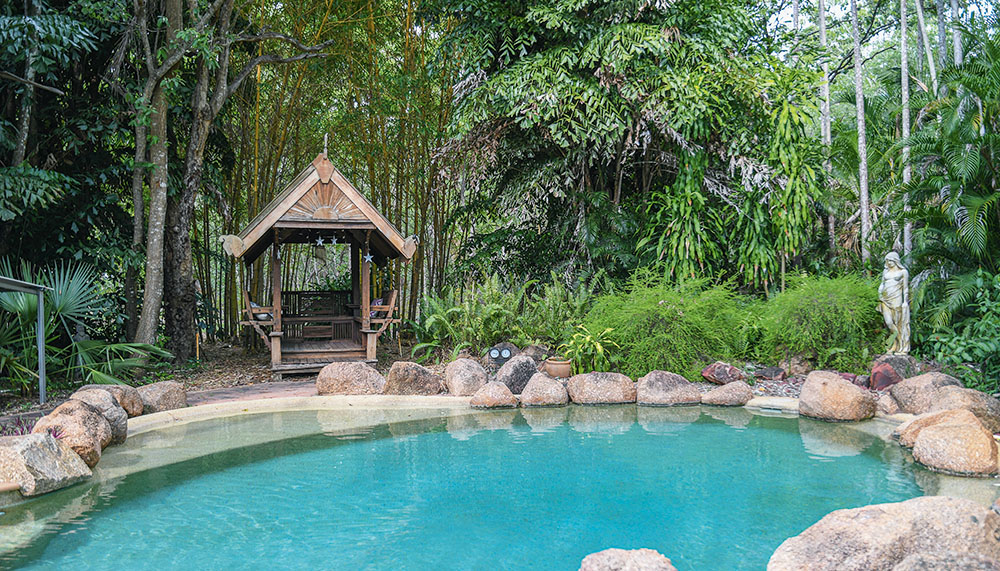Keeping on top of the falling palm fronds and rapid growth is the key to this lush tropical garden in Virginia, NT.
Story + Photos Kerry Sharp
Lofty stands of bird-attracting grevilleas, fragrant native fruit trees, tropical ferns and generous beds of cycads and multi-hued bromeliads (the owner’s favourites) take centrestage among a myriad of mostly native plants on Kingfisher Haven at Virginia, 30km south of Darwin.
Directly behind the ground-level house and its spacious verandahs is a large old woolly butt tree with a sizeable hollow that has been home to a kingfisher family for many years, hence the property’s name. The hollow is presently occupied by a large beehive. “This is the second time they’ve taken over our kingfisher nest and I’m hoping they’ll move on soon so these beautiful birds will come back and produce more offspring,” Wendy says.
As a lifelong bird-lover, Wendy was thrilled to find the Virginia property populated by a boisterous bounty of feathered natives, including honeyeaters, finches, kookaburras and a rare rainbow pitta. “It came back four or five years in a row,” Wendy says. “Sadly, we haven’t seen it for a while.” The often resented orange-footed scrub fowls, or bush chooks as they are more commonly known, are also active around the garden. “In the past four or five years, they have reactivated a large nesting mound out the back, which was dormant for our first few years here,” Wendy says. “After our first three weeks away from here, we were shocked to come home to a new mound practically on our doorstep, near Gav’s outdoor bar and grill. I thought it was cute till I read how big they become and how many years the bush chooks work on them. We started a battle to remove it and won three years later by filling the garden bed with messy but effective Carpentaria seed pods, which they can’t get under to scratch and dig. They got their revenge some years later by building a new mound in undergrowth close to the house. We have a truce now, and there have been multiple baby bush chooks hatched from this mound."
This story excerpt is from Issue #141
Outback Magazine: February/March 2022










